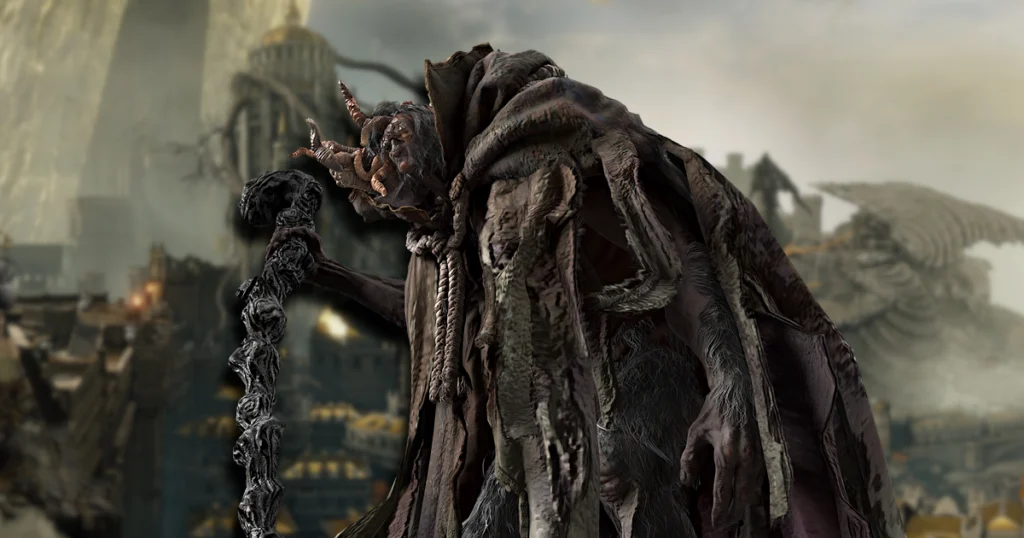
Foul Tarnished, in search of the Elden Ring.
– Margit, The Fell Omen
Emboldened by the Flame of Ambition.
Someone must extinguish thy flame.
Let it be Margit the Fell!
In the shattered world of Elden Ring, where the golden light of the Erdtree casts long shadows, there are demigods marked by great power and even greater misfortunes. Morgott, the Omen King, also known as Margit, the Fell Omen, represents Elden Ring’s theme of both fate and family burden.
In this article, we are going to talk about Morgott’s lore. We will explore his origins and dissect his dual role as Margit, the Fell Omen, and the theories revolving around his true motivations to hunt us, the Tarnished.
Was Morgott a selfless protector of the Erdtree, or was there something else… darker, maybe, fueling his intentions?
The Cursed Blood of Omen in Morgott Lore
Let’s start talking about Morgott’s Lore right at the beginning. He is the son of Queen Marika, The Eternal and Godfrey, First Elden Lord.
Considering Marika and Godfrey’s other child, Godwyn, you might ask yourself why Morgott is that… different. I mean, that’s a lot of horns.
Morgott, as his twin brother, Mohg, was born an Omen. The main characteristic of an Omen is the presence of horns coming out of their bodies, and they do not stop only at the head. As shown by the design of some Omens in the game, they can be covered in horns from top to bottom. Also, they are quite imposing, and possess incredible strength.
Under the rule of the Golden Order, where the concept of actual Order is seen as a priority above all else, Omens are considered bearers of accursed and impure blood. In a more practical sense, the horns and similar features possessed by Morgott and the other Omen are connected to the Crucible, which was the primordial form of the Erdtree. As for all the theories surrounding the Crucible and its origins, that will be a topic for another article!
A Shackled Prisoner of Royal Blood
Although being an Omen, Morgott’s status of demigod and direct descendant of the Goddess of the Golden Order and an Elden Lord still meant something: he was spared the terrible fate of getting his horns severed. Morgott’s fate is revealed in the Regal Omen Bairn item description:
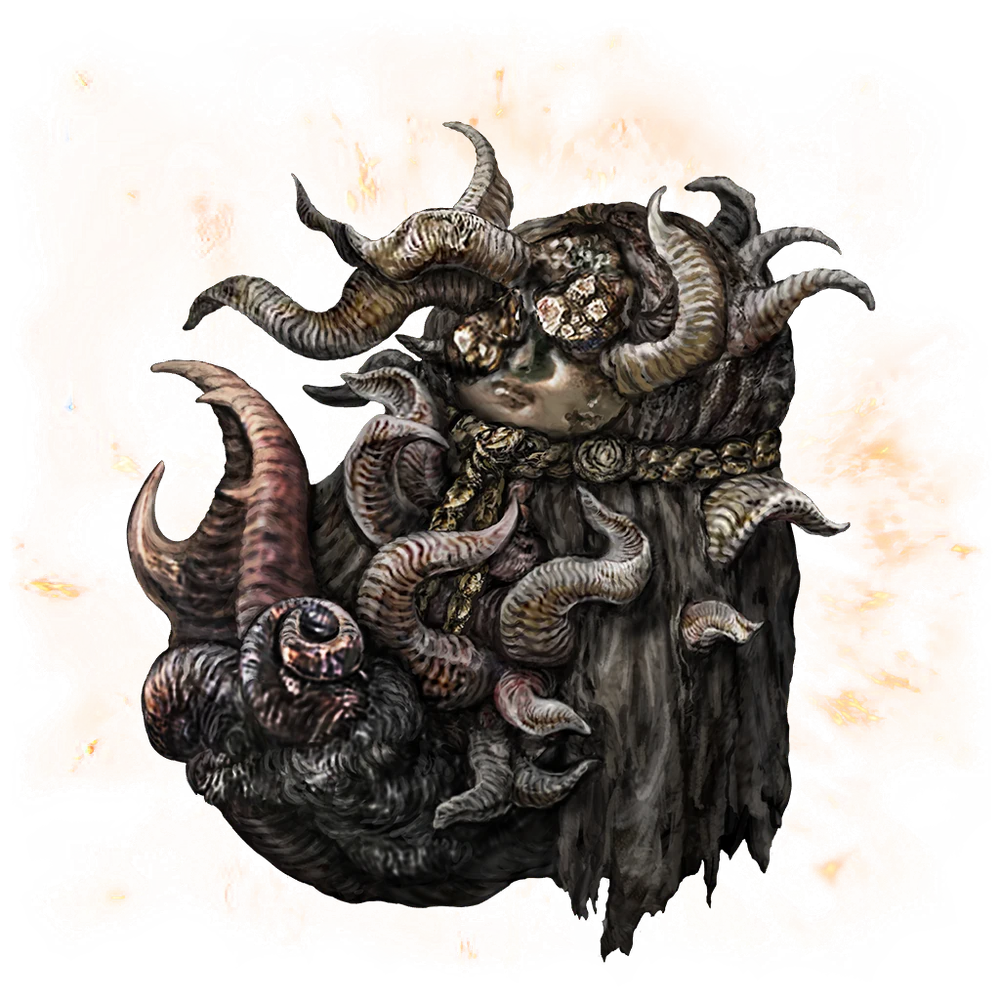
[…] Omen babies born of royalty do not have their horns excised, but instead are kept underground, unbeknownst to anyone, imprisoned for eternity.
– Regal Omen Bairn
He was confined and shackled underground in a dungeon made on purpose for Omens and other unwanted creatures born of royal blood: The Subterrean Shunning-Grounds.
The proof of being bound in Morgott’s lore is found in the description of Margit’s Shackle, which says:
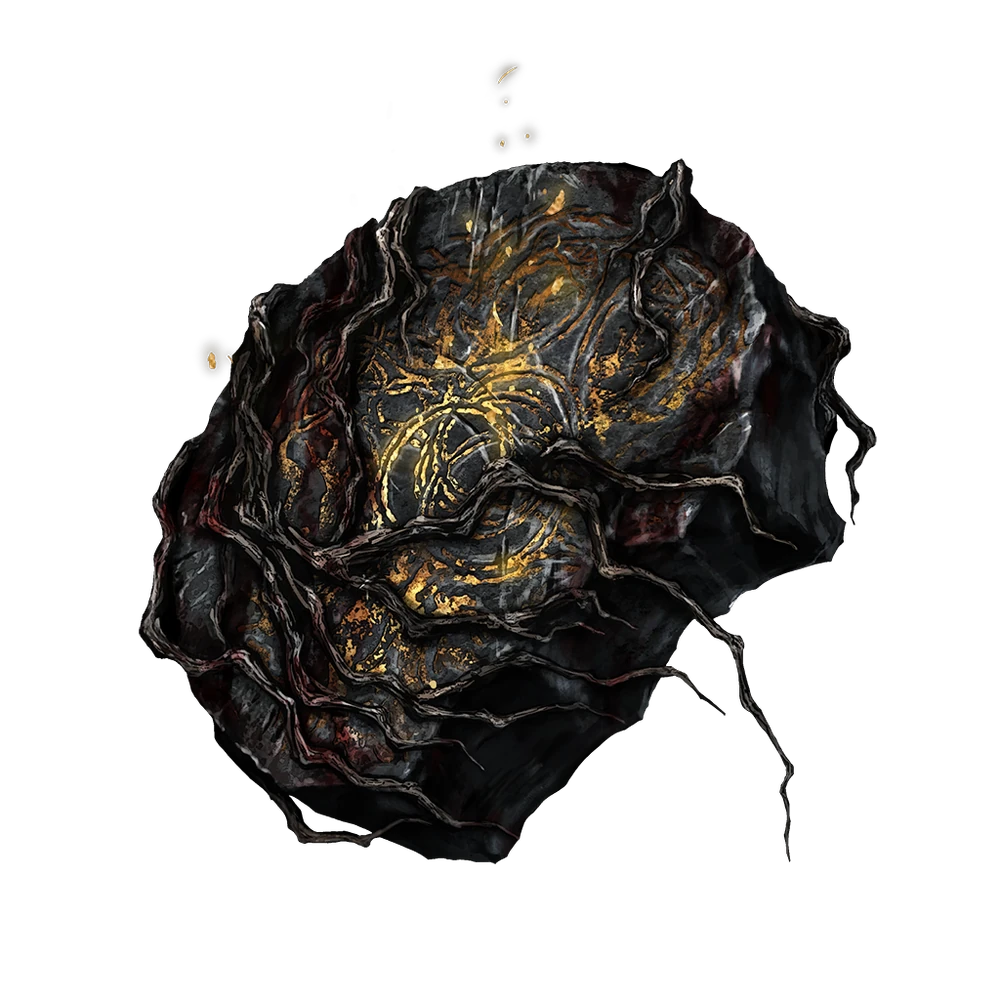
[…] Shackles were used to bind the accursed people called the Omen, and these ones were made to keep a particular Omen under strictest confinement.
– Margit’s Shackle
Though faint, the shackles still retain vestiges of power — enough to trap the once-bound Margit on earth, if only for a short time.
This is also a hint for the player, who can use the shackle in both Morgott and Margit’s boss fights to stun him for a whopping 5 seconds.
The Lore of Morgott is a Tale of Both Defiance and Dedication
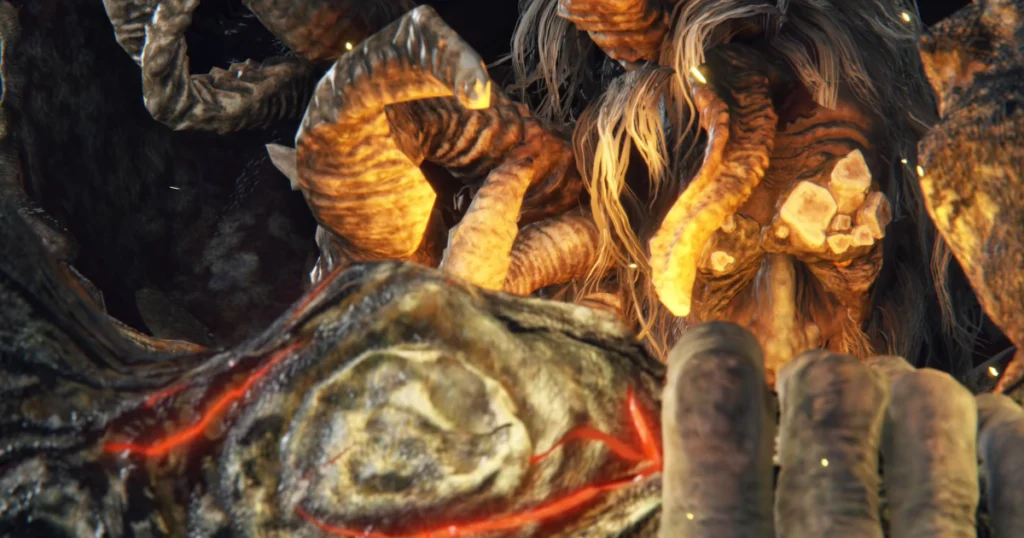
Even though Morgott didn’t receive the best parenting ever, he did not resent neither his family nor the Golden Order. He wanted to be part of it.
He freed himself of his accursed blood and sealed it in his blade. When Marika shattered the Elden Ring (more about “The Shattering” in this article) and the Lands Between fell into chaos, Morgott inherited a fragment of the Elden Ring and took control of Leyndell, Royal Capital.
In Morgott’s Great Rune we can find further evidence of his sovereign:
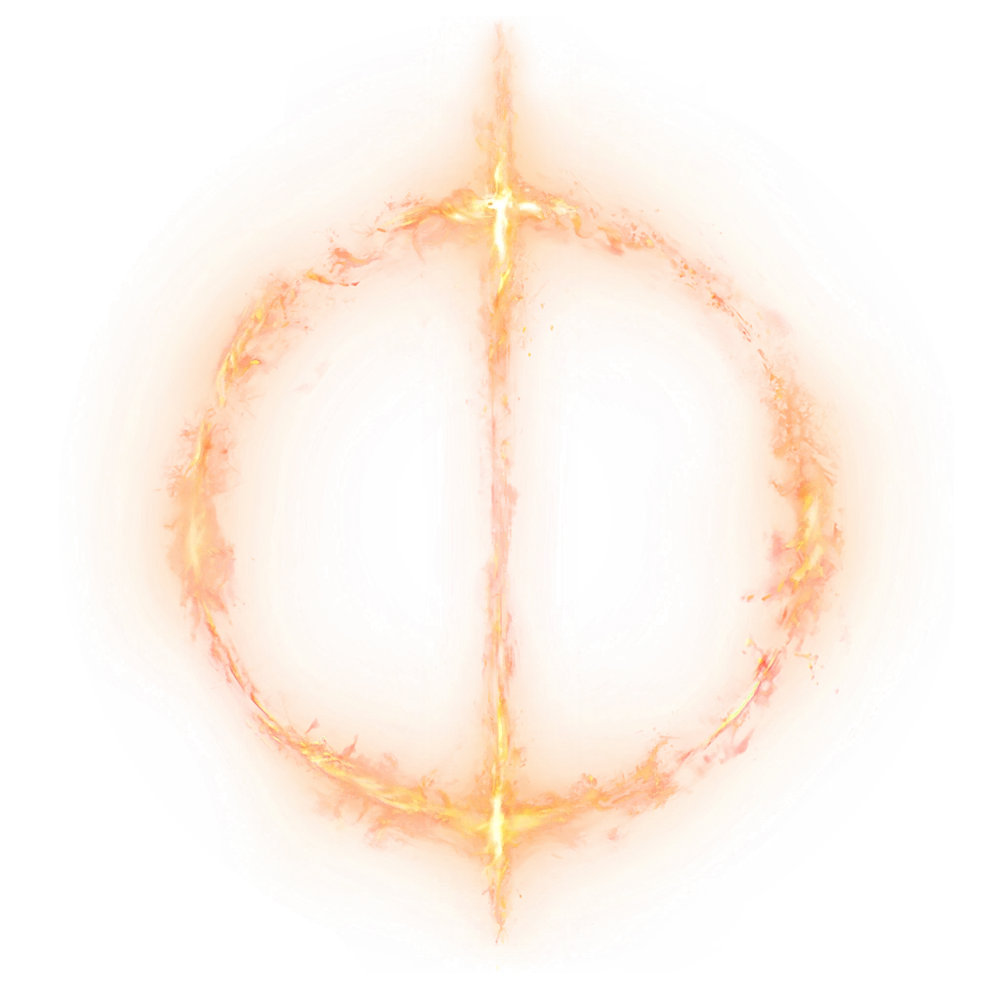
[…] This Great Rune is the anchor ring that houses the base, and proves two things:
– Morgott’s Great Rune
That the Omen King was born of the golden lineage and that he was indeed the Lord of Leyndell.
Now a king, Morgott managed to protect both the city and the Erdtree from the other Shardbearers and tarnished alike.
The war with his siblings left a bitter scar in Morgott’s family relationship, as said in his dialogue when meeting him at the base of the Erdtree in Leyndell:
Graceless Tarnished.
– Morgott, The Omen King
What is thy business with these thrones?
Ahh… Godrick the Golden. The twin prodigies, Miquella and Malenia. General Radahn. Praetor Rykard. Lunar Princess Ranni.
Wilful traitors, all.
Thy kind are all of a piece.
Pillagers. Emboldened by the flame of ambition.
The Shattering was also a pivotal moment in Morgott’s story, as he assumed his other name and persona: Margit, The Fell Omen.
Morgott’s Other Persona: Margit, The Fell Omen
Why does Morgott need another name, like many other characters including Maliketh, you may ask? Because even though the events following the shattering shook the Golden Order to the core, Omens were still feared and shunned, nonetheless.
Morgott, also called the Veiled Monarch of Leyndell by Gideon Ofnir, ruled the city from the shadows. Margit, instead, was an omen who fought and killed any tarnished who wanted to claim the title of Elden Lord. He was not alone in doing so. The description of the Night’s Cavalry Helm states:

[…] The Night’s Cavalry, who now wander the dim roads of night, were once led by the Fell Omen and were deliverers of death for great warriors, knights, and champions.
– Night’s Cavalry Helm
Disguised as Margit, Morgott led the feared Night’s Cavalry, extending the hunt for the tarnished even outside of Leyndell grounds.
My Theory on Morgott’s True Motivations
I would like to add that the Morgott’s hatred towards the other Shardbearers was not caused necessarily by them being traitors of the Golden Order. It is possible that Morgott was just frustrated because he did not manage to either become an Elden Lord or gain access to the Erdtree altogether, and he did not want to give the other Shardbearers a chance at it. We know for sure that Morgott tried this feat, because he says this to the player in his dying breath after being defeated in Leyndell:
Tarnished, thou’rt but a fool.
– Morgott, The Omen King
The Erdtree wards off all who deign approach.
We are…we are all forsaken.
None may claim the title of Elden Lord.
Thy deeds shall be met with failure, just as I.
What was, then, the real reason to be haunted by him throughout the game? Was it really to protect the Erdtree and the Golden Order… or was it mere jealousy? Maybe the thought of somebody else ascending to become Elden Lord would have just put the final nail in the coffin of his ill-fated life.
Fate, be it by birth or by chance, remains a central argument in the Lands Between.
Conclusion
Morgott’s lore remains an enigma. Was the Omen King driven by a perhaps twisted sense of duty after being rejected by the Golden Order? His final words, “None may claim the title of Elden Lord”, leave room for us to interpret. Maybe he really believed that. Or maybe he tried up until the end to maintain some sort of control over his rule, since he could not control much of his life.
I really hope that you, dear reader, enjoyed this article. Feel free to explore other articles on Elden Ring, which you can find here!
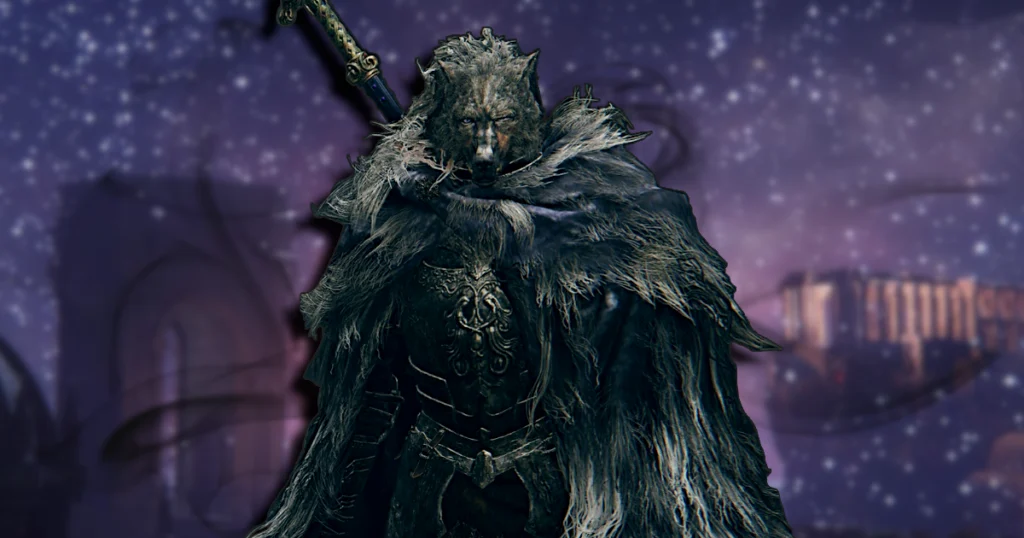
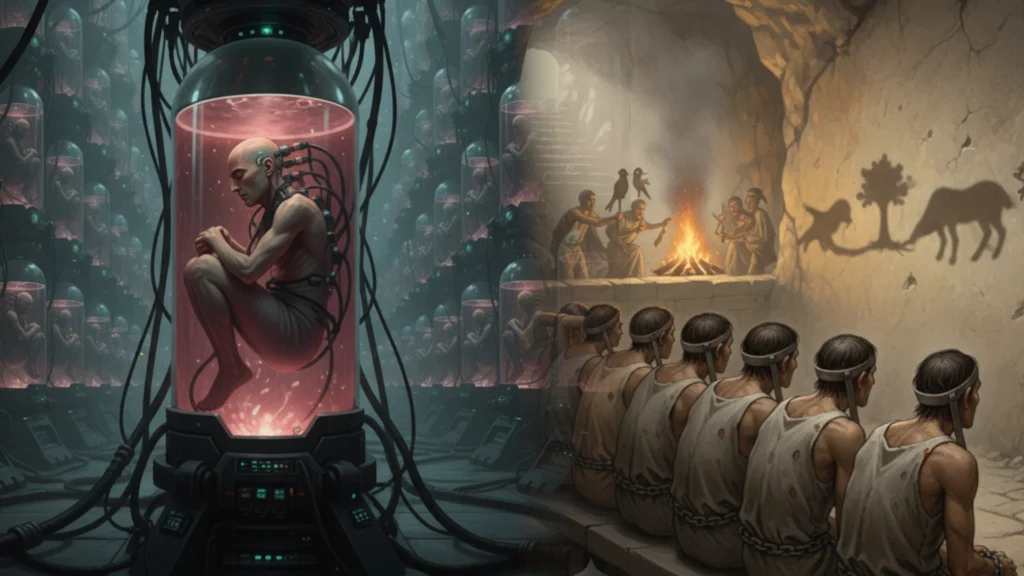
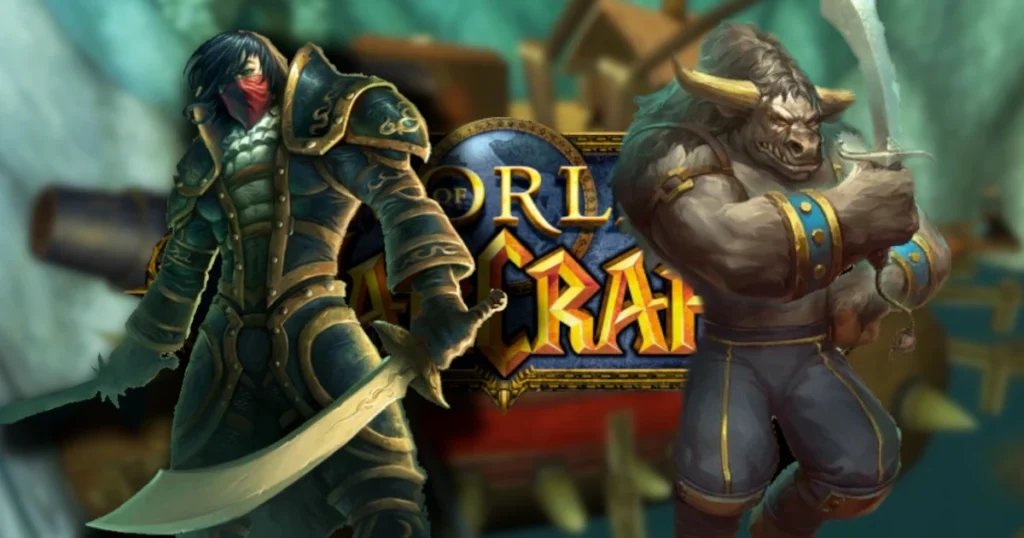
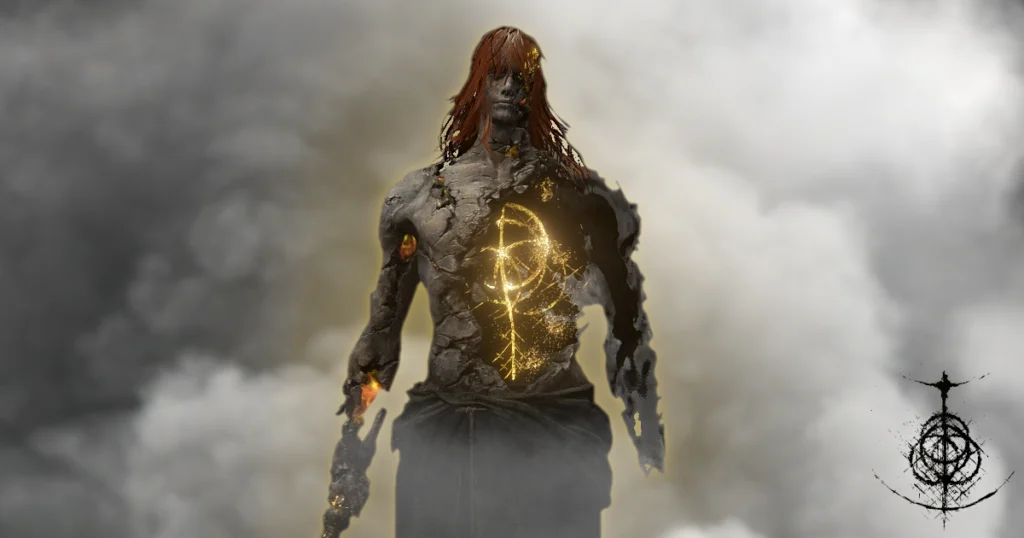
Pingback: Mohg Lore: A Dynasty For The Lord of Blood – Elden Ring